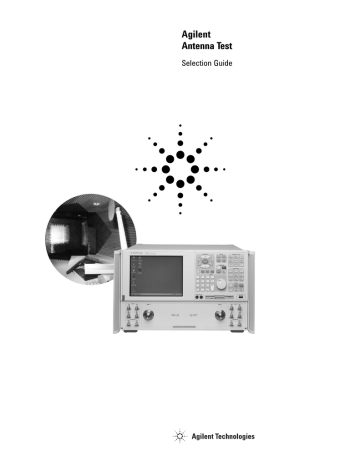- No category

advertisement

30
Forward
Near-field data collection
Frequency multiplexing during a data scan/acquisition can result in a misalignment of the rectangular near-field grid between forward and reverse data scan directions. This introduces an error into the measured near-field data set which results in a far-field pattern. One way to eliminate this error is to always collect data measurements in the same scan direction, but this would double the data scan acquisition time. Another approach is to scan frequencies in reverse order on reverse scans. Using this reverse sweep in conjunction with correct triggering between forward and reverse passes insures that each frequency set is spatially aligned on the rectangular near-field grid. This technique requires an RF source that supports reverse frequency list mode of operation.
The PNA network analyzer includes reverse sweep and edge triggering capability specifically designed for antenna measurements.
F1 F2 F3 F1 F2 F3 F1 F2 F3
F1 F2 F3
Reverse
Forward
F3 F2 F1 F3 F2 F1 F3 F2 F1 F3 F2 F1
Bi-directional scanning can introduce errors in measured positions
F1 F2 F3 F1 F2 F3 F1 F2 F3 F1 F2 F3
Reverse
F1 F2 F3 F1 F2 F3 F1 F2 F3 F1 F2 F3
Solution: Reverse frequency sweep and synchronous triggers
Figure 18. Reverse sweep with synchronous triggers
Functional test
A software utility is available for the PNA network analyzer that helps verify that a PNA has been correctly configured with an external source for making antenna measurements. The utility configures the PNA as a receiver and communicates with external sources over GPIB. The triggering is done by handshaking the PNA and external sources using the TTL trigger in and trigger out capabilities on the PNA and PSG. The software does not verify specifications, but is useful in determining that a valid connection has been established between the analyzer and the source.
Go to http://na.tm.agilent.com/pna/antenna to download the program.
advertisement
* Your assessment is very important for improving the workof artificial intelligence, which forms the content of this project
Related manuals
advertisement
Table of contents
- 3 Use this guide to
- 4 Main parts of an antenna range
- 4 Channel Partners
- 6 Near-field antenna measurements
- 7 Far-field antenna measurements
- 9 Radar cross-section measurements
- 10 Banded millimeter-wave antenna configurations
- 12 Transmit site configuration
- 17 Receive site configuration with external mixing
- 21 Determining measurement speed
- 22 Optimizing speed and dynamic range
- 23 PNA interface requirements
- 29 Triggering
- 30 Functional test
- 31 analyzer based systems
- 32 PNA series network analyzers
- 33 Migration examples
- 35 Microwave network analyzers
- 38 Sources
- 40 Frequency converters
- 50 Amplifiers
- 52 Multiple-channel measurements
- 56 Measurement automation
- 57 Terms and definitions
- 58 PNA memory
- 58 Memory clearing, sanitization and/or removal procedures
- 59 User and remote interface security measures
- 60 Procedure for declassifying a faulty instrument